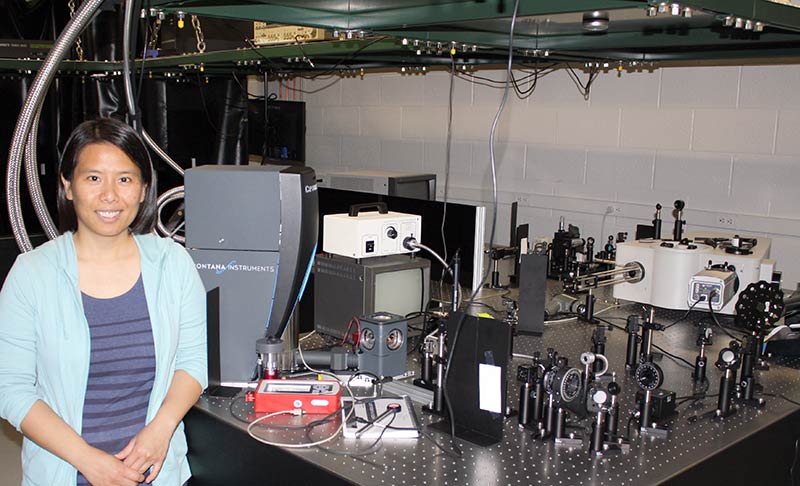Research Focus on Dr. Yanwen Wu
Modern day computational devices, from smartphones to supercomputers, all rely on electrons to carry and process information. As the footprint of the basic circuits on a microchip is shrinking to nanometers in size, close proximity of these components can cause an information “traffic jam” due to the interactions between electrons. In order to overcome this limitation, current research efforts by Dr. Yanwen Wu, University of South Carolina, are exploring the idea of replacing electrons with photons as the principal carriers of information since they do not interact directly with each other. A photonic device is expected to be superior in terms of speed, bandwidth, and energy efficiency. However, this lack of direct interaction can be a double-edged sword: how can a photon be controlled by another photon in an all-optical device? To answer this conundrum, this proposed project will exploit the electromagnetic confinement and enhancement power of metallic nanostructures to not only guide photons on a nanoscale footprint below their diffraction limit, but to also control, on the timescale of trillionths of a second, how photons are emitted from a nanoscale light source called the quantum dot and where they will go. The key idea is not to rely on the direct photon interaction but rather to use the optically excited metallic nanostructures to strongly modify the quantum dot, which subsequently determines the properties and directions of the produced photon. The successful implementation of these techniques lays the path to ultrafast optical switches or transistors that can lead to a paradigm shift in information processing technology.
This five-year career-development plan is a comprehensive research, education, and outreach program. The research plan aims to develop new ways of controlling the light-matter interactions on the nanoscale in a hybrid system of quantum dots and plasmonic structures.
The objectives of the proposed research project are two fold:
The first explores a new approach for manipulating and tuning the internal energy states of a single quantum dot through the optical modification of its local dielectric environment using a plasmonic gate. This indirect method exploits the strong near-field effect of the plasmonic structure as a mean of control while avoiding significant changes to the intrinsic properties of the quantum dot due to ohmic loss.
The second investigates the coherent and incoherent couplings between two spatially separated quantum dots via a plasmonic waveguide and establish entanglement between the linked dots through a dissipative coupling channel. This coupled design protects stored information in the presence of ohmic loss while maintaining the ultrafast optical readout and broadband guided transfer enabled by a plasmonic waveguide. All of these capabilities are highly desirable in a wide range of applications from ultrafast optical switches to quantum information processing.
The educational plan outlines a deep commitment to improve STEM education at the K-12 and university levels. The objectives of the proposed educational plan aim to develop an integrated approach that combines academic learning with extracurricular guidance to help students gain the scientific, analytical, and stress management skills necessary in becoming an independent scientist. This approach is carried out through the revitalization of the local Society of Physics Student chapter. In addition, outreach activities are structured to promote the field of nanotechnology and optics to young women in K-12 schools through visual and interactive presentations and engage middle and high school girls in STEM. Lastly, a new graduate quantum optics course is developed to address the knowledge gap in the current physics curriculum.
Project Title: NSF CAREER:An all-optical plasmonic device to control and couple quantum dots for optical and quantum information processing. Click here to read the NSF Project Abstract.
Click download PDF of Research Focus on Dr. Yanwen Wu
August 15, 2017
